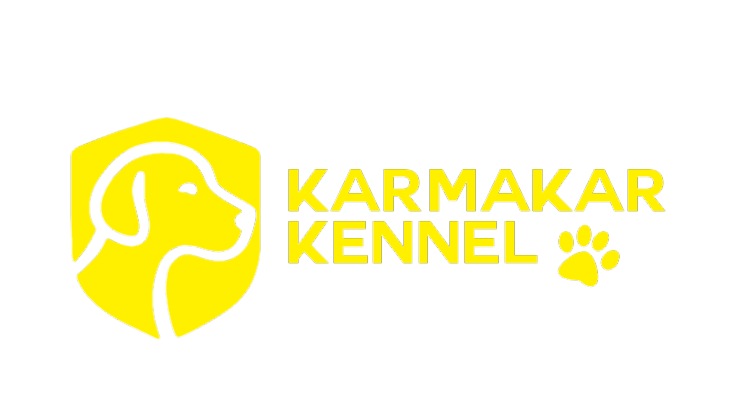Amazing Dog Barking Solutions India: 3 Simple Steps to Calm Behavior

Dealing with common behavioral challenges like excessive barking or separation anxiety requires a consistent, kind, and strategic approach. For pet owners across India, understanding why your dog misbehaves is the first step toward finding effective dog barking solutions India. This guide provides practical advice and positive dog training tips India to help you manage and resolve the most frequent behavioral issues.
1. Excessive Barking: Effective Dog Barking Solutions India
Excessive barking is often the number one complaint of urban dog owners. It is crucial to understand that barking is a natural form of canine communication (alert, attention-seeking, anxiety, or boredom), and yelling back will only confuse or excite your dog.
Positive Reinforcement for Quiet:
- The “Quiet” Command: Teach this command by waiting for a moment of silence immediately after your dog barks. As soon as they stop, say “Quiet” and immediately reward them with a treat or praise. This positive reinforcement associates silence with a reward, making them more likely to repeat the quiet behavior.
- Desensitization to Triggers: If your dog barks at outside stimuli (passersby, other dogs), gradually expose them to the trigger at a distance where they remain calm. Reward them with high-value treats for looking at the trigger without barking. If they bark, you are too close.
- Managing Attention-Seeking: If your dog barks for attention, ignore the barking completely. Instead, reward them only when they stop and perform a replacement behavior, such as settling on their bed. Yelling or confining them while barking rewards the noise. The key to dog barking solutions India is rewarding the quiet.
Reducing Boredom Barking:
A tired dog is a quiet dog. Ensure your dog gets sufficient daily physical and mental exercise to burn off energy that fuels noise. This is one of the most effective dog barking solutions India. For more information on canine mental stimulation, check out our guide on [The Best Dog Toys for Mental Stimulation] (Internal Link to Week 4, Month 2).
2. Managing Dog Separation Anxiety at Home
Dog separation anxiety is a complex condition rooted in panic, not disobedience. Symptoms like destructive behavior, house soiling, or persistent barking happen only when the owner is absent.
Gradual Behavioral Modification:
- Downplay Exits and Returns: Keep your hellos and goodbyes calm and low-key. Overly affectionate departures and returns reinforce your dog’s fear of you leaving.
- The “Stay Game”: This involves gradually desensitizing your dog to the indicators that you are leaving (keys, shoes, coat). Do these actions repeatedly without leaving. Once they are comfortable with the cues, start disappearing for very short intervals (seconds) and gradually increase the time, returning before they panic.
- Independence Training: Do not allow your dog to follow you constantly from room to room when you are home. Teach the “stay” command and practice leaving them alone for short periods to foster independence.
- Mental Work Before Leaving: Provide your dog with an engaging, high-value interactive toy (like a Kong stuffed with frozen peanut butter or kibble) just as you leave. This makes their alone time a rewarding ritual.
Critical Dog Separation Anxiety Tips:
- Never Punish: Punishment will increase your dog’s anxiety and worsen the destructive behavior.
- Professional Help: For severe cases where the dog is causing self-injury or significant damage, consult a professional such as a Certified Separation Anxiety Trainer (CSAT) or a veterinary behaviorist. We recommend consulting the ASPCA’s Guide to Separation Anxiety for detailed, professional protocols (External DoFollow Link to External Resource).
3. General Dog Training Tips India Using Positive Reinforcement
Positive reinforcement is the most humane, effective, and science-backed method for all dog training tips India. This technique involves rewarding desired behavior with a pleasant stimulus (treat, toy, praise), making the dog more likely to repeat that behavior.
Positive Training Principles:
- Rewards are Everything: Rewards can be food treats (small, tasty, and quickly eaten), verbal praise (“Yes!”, “Good dog”), or a favorite toy/game. Find what motivates your dog the most.
- Timing is Crucial: The reward must be delivered immediately (within 1-2 seconds) after the desired behavior to ensure your dog associates the reward with the correct action.
- Consistency is Key: All family members should use the exact same verbal cues (“sit,” “down,” “quiet”) to avoid confusing the dog.
- Replace, Don’t Punish: If your dog chews furniture or jumps, do not scold. Instead, immediately redirect them to an appropriate chew toy and reward them for using the correct item.
Solving Common Issues:
- Jumping: Ignore the jump completely (turn away, no eye contact). Reward them only when all four paws are on the ground or when they sit calmly.
- Chewing/Destruction: Ensure they have plenty of appropriate chew toys. If they start chewing something wrong, get their attention and immediately replace the item with a toy. Providing mental stimulation with puzzle toys can also help. For general advice on bringing home a new companion, refer to our [First-Time Pet Owner’s Checklist] (Internal Link to Week 1, Month 2).
- Leash Pulling: Stop walking the moment your dog pulls. Resume only when the leash slackens. Reward loose-leash walking with a treat.


